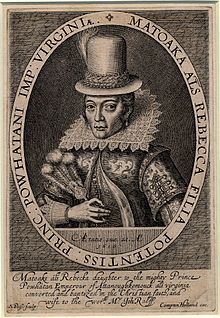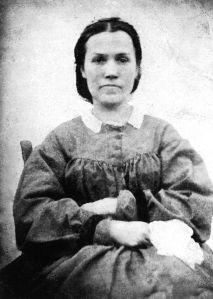SOURCE:
https://southernrootsandbranches.wordpress.com/2013/08/03/john-basse-a-story-of-the-new-world/
A cousin who blogged in 2013 about his connection to the Bass Family...very nicely written, so I went back to the original to get the pictures to add here as well! Thanks Billy Pittard. I have no recent posts by him, so perhaps he's moved on to other interests since his last blog in July 2018.
John Basse, a Story of the New World
Posted in Bass, Batey, Henderson on August 3, 2013| 96 Comments »
John’s grandfather, Humphrey Basse and his brothers, William and Thomas were French Huguenots who immigrated to London during the reign of Elizabeth I seeking religious freedom. Humphrey married Mary Bouchier, daughter of Dominick and Genevieve Bouchier, also French Huguenots. Humphrey was an entrepreneurial man, first as a merchant haberdasher, and then as an investor and stockholder in the Virginia Company which financed settlements in Jamestowne, Virginia. Humphrey invested in the Third Charter of the Virginia Company signing as a founder on March 12, 1612.
 |
| Arriving in Virginia |
In 1619 when John was three years old, his father, thirty-year-old Nathaniel Basse made his first trip to the new colony. On April 27, 1619 Nathaniel arrived at Jamestown on Captain Christopher Lawne’s ship. They brought workmen, supplies and one hundred settlers. Their camp was at the mouth of a creek near Jamestown, still named, Lawne’s Creek, from which they built the first settlement in Isle of Wight County, Virginia.
By mid-summer 1619, there were about a thousand English living in Virginia. In early August, the first legislative assembly in America met in the church at Jamestowne. This meeting established the principle of elected self-rule in America and became a foundation of our Republic. Five months later, the Virginia Company dissolved its subsidiary company which had been formed to exclusively supply the colony. Thereafter, free trade prevailed in the colony and laid the foundation for free enterprise as the form of the American economy.
Nathaniel made frequent trips between Virginia and London over the next few years. On November 21, 1621 he made his move to establish a home in the New World and patented 400 acres on the James River at Pagan Creek in Isle of Wight County. Here he founded Basse’s Choyce Plantation and built a home for himself and his young family.
John’s maternal grandfather, Silas Samuel Jordan was also an early Virginia Adventurer. In 1620 he received a grant of land on the James River at Bailey’s Creek near the present Hopewell, Virginia. Here, at what is still called Jordan’s Point, he and established a home for his family in the New World.
Throughout this period, relations with the Indians had been volatile. Early encounters had been hostile, and then the “Peace of Pocahontas” gave the settlers a sense that conditions would remain amenable.
Having established Basse’s Choyce Plantation, John’s father began to move his family to Virginia. In early 1622, six-year-old John Basse along with at least one of his brothers were at Basse’s Choyce when their parents made a return trip to England.
And then disaster struck. Emperor Powhatan (father of Pocahontas) had died four years earlier and had been succeeded by his brother, Opechancanough. He wanted no part of the white men and he patiently organized a surprise attack that was carried out by almost every tribe in the area. On the same day, at the same time, and anywhere there was a white man, he was to be killed.
At midday on Good Friday, March 22, 1622, there were twelve hundred forty English inhabitants in the Colony of Virginia. Of these nearly four hundred were killed by Indians. At the house of Captain John Basse, only six-year-old John Basse survived. John’s oldest brother seven-year-old Humphrey and possibly other siblings were killed in the attack.
 |
| Virginia Indians attack the colony, March 22, 1622 |
John’s parents, Nathaniel and Mary arrived back in Virginia on the ship Furtherance within the next couple of weeks only to find their oldest son (and possibly others) killed in the massacre, and six-year-old John was missing without a trace. They found the woods around the English settlements patrolled by hostile Indians.
Nathaniel and Mary had little time to mourn because Basse’s Choyce had to be immediately repaired for the birth of another child. On May 8, 1622 their sixth child, Edward, arrived. To make matters even more dire, in December an epidemic arrived with the ship Abigail, and killed twice as many people as the Indian attacks. The colony also had a poor harvest that year and experienced another “starving time” throughout the winter of 1622-23. Less than 500 survived to see the spring of 1623.
Amid the carnage that happened that fateful Good Friday, young John Basse managed to slip away from the attackers and into the forest. Fortune smiled on the boy as he was found and taken in by friendly Nansemond Indians who were fleeing from the hostilities. His rescuers managed to reach the Nansemond River with John before their enemies had organized patrols in the woods.
John’s rescuers took him into their tribe and gave him advantages and standing. He absorbed the Nansemond culture. In spite of the danger, missionaries continued to teach the Nansemonds – including young John Basse – and he matured to become literate and a Christian.
By the time he was twenty-two John had fallen in love with a Nansemond girl whom he knew as Keziah Elizabeth Tucker, daughter of Chief Robin the Elder, but to the English she was the Princess Keziah Elizabeth, daughter of the King of the Nansemond Kingdom. On August 14, 1638 John and Keziah Elizabeth, age 14, were married. She was born about 1624 at Kecoughton, an Indian village in Virginia (now part of the city of Newport News). “Keziah” is an old testament name that can mean faithful or female equality.
At some point during his remarkable lifetime, John acquired an English prayer book which served as his family Bible. In this book he recorded many important facts and events. This book exists today and is in the possession of his Nansemond tribe descendants.
John Bass’ prayer book is a manuscript religious book of about 100 pages. It measures 4 5/8″ by 7 1/4″. The author’s name not known. The earliest date of a sermon entry is March 4, 1660. In ink on the cover is written “Book of John Basse Norfolk Co., Vir. A. D. 1675.”
John recorded the following passage in his prayer book:
“John Basse was born ye 7 day of September in ye year of our Lord 1616 ye son of Nathll Basse and Mary his wife… he married Elizabeth dafter of Robin the Elder, King of ye Nansimuns kingdom, a Baptized xtian, in Holy Matrimonie accdg to ye Canons of ye Church of England, ye 14th day of August in the Year of our Blessed Lord 1638.”
At some point it is believed John reconnected with his birth family because his brother Edward (born immediately after the massacre of 1622) married Keziah Elizabeth Tucker’s cousin.
John and Keziah were living in Nansemond territory when it became Upper Norfolk and then Nansemond County, Virginia. John passed away in 1699 at the age of 82 in Norfolk, Virginia. Keziah Elizabeth passed away in 1676 at the age of 52.
John and Keziah Elizabeth had eight children and today have countless descendants.
My (Billy Pittard) Ancestry from John and Keziah Elizabeth Basse is as follows:
John Basse (1616-1699) + Keziah Elizabeth Tucker (1624-1676)
William Bass (1654-1741) + Catherine Lanier (1650-1692)
John Bass (1673-1732) + Love Harris (ca. 1677-1732)
John Bass (1715-1777) + Elizabeth Winborne
Jacob Bass (1740-1792) + Ann Fuller (1733-1791)
Theophilus Bass (1753-1826) + Rachel Vinson (1755-1824)
Etheldred Bass (1785-1875) + Nancy Brien (b. ca. 1790)
John B. Bass (b. 1813) + Susan Barbee (b. ca. 1819)
Sarah Jane Bass (1840-1876) + John Bond Henderson (1834-1898)
William Bass (1654-1741) + Catherine Lanier (1650-1692)
John Bass (1673-1732) + Love Harris (ca. 1677-1732)
John Bass (1715-1777) + Elizabeth Winborne
Jacob Bass (1740-1792) + Ann Fuller (1733-1791)
Theophilus Bass (1753-1826) + Rachel Vinson (1755-1824)
Etheldred Bass (1785-1875) + Nancy Brien (b. ca. 1790)
John B. Bass (b. 1813) + Susan Barbee (b. ca. 1819)
Sarah Jane Bass (1840-1876) + John Bond Henderson (1834-1898)
See my post on the Henderson Family of Middle Tennessee for the continuation of this part of my ancestry which comes forward through my mother and maternal grandmother.
In the above ancestry, Theophilus Bass forward were residents of Wilson County, Tennessee, particularly around Watertown.
Interestingly, I also have a connection to John and Keziah Elizabeth Basse through my maternal grandfather, Frank Blackburn Batey as well, but in that case it is a through marriage rather than blood. My ancestor, Captain William Batey, the progenitor of the Batey family of Middle Tennessee married a second time after his first wife, my ancestor died. His second wife, Ann Bass was the great granddaughter of John and Keziah Elizabeth Bass.
It’s safe to say that a great many locals from Middle Tennessee are descended from John and Keziah Elizabeth Bass.
Links:
http://en.wikipedia.org/wiki/Nansemondhttp://chowanoke.webs.com/bassegenealogy.htm
http://www.geocities.ws/eldavis.geo/jbassebi.html
http://www.geocities.ws/eldavis.geo/jbassebi.html
A special thanks goes to my distant cousin Mary Frances Andrews Meek of Knoxville, Tennessee who shared this story and much more with me many years ago. Her research was thorough and diligent.
--------------------The above blog was published in 2013 -------
--------------------The above blog was published in 2013 -------





Interesting.
ReplyDeleteI come to some conclusions based on the history I've learned about American Indian tribes. To have a little boy of 6 rescued (or maybe kidnapped) the Nansemond tribe might have had a sense that he was of value to them, and perhaps kept him with them. That would have meant he learned their customs, dress, food preferences, hunting abilities. And he was still educated as today's story tells, given a clear Christian upbringing even while living with the Nansemonds. But he would not have been easily re-assimilated into the British colonial life. My guess is that he was recognized by the Basse family, but may have remained with the Christianized American Indians and his wife, rather than moving into the "plantation culture." They would have raised their children as American Indians as well.
ReplyDelete